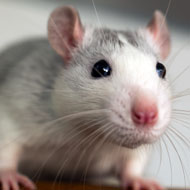Wind turbine changes needed to save bats, scientists say
Ecologists say a global effort is needed to prevent a serious conservation issue.
A global team of researchers have concluded that stricter regulations around the world are needed to better protect bats and other wildlife from wind turbines.
The calls come as the ecologists estimate that, in Germany alone, 200,000 bats are dying annually to wind turbine related causes.
Researchers say that bats are colliding with rotor blades and losing access to traditional habitats, posing a serious conservation issue. They are now calling for a global application of measures to reduce fatalities.
There are currently measures to prevent bat casualties being successfully implemented in the European Union (EU), Canada, and parts of the USA.
These measures prevent wind turbines from being built on ecologically valuable sites, such as diverse old-growth forests. They also ensure that wind turbine development is avoided within proximity of forest edges and water bodies, which may act as migratory corridors for birds and bats.
Additionally, low-yield periods of low wind speed at night are to be excluded from operation. This may cause a low yield loss, but prevents fatalities by more than 80 per cent.
‘Feathering’, where turbine blades are turned at an angle which turns them slower, is also recommended at times of low wind speeds.
However, although the scientific team believe these measures to be effective, they say there is work to be done to implement them on a global scale. The requirements are so far limited to the regulations of countries where bats are protected.
Worldwide, 131 countries have joined a United Nations convention to protect bats. The research team say that most of these signatories have implemented few or no protective measures for bats at wind turbines.
In the USA, only bats ‘threatened with extinction’ receive protection status. While EU member states protect all bats, the scientists believe the implementation of conservation measures remain inconsistent.
Meanwhile in Brazil, environmental licensing remains relaxed, leading to wind farms being constructed in areas with high biodiversity values.
The research team therefore believes that a global effort to implement measures to protect wildlife could protect bats and their place in global ecosystems.
Dr Christian Voigt, head of the department of evolutionary ecology and a bat specialist at Leibniz Institute for Zoo and Wildlife Research, said: “In Germany, for example, two thirds of wind turbines on the mainland – that is 18,000 turbines – are operated without curtailment to protect bats.
“Without appropriate regulations to ensure curtailment, an average of 14 bats per year die at a single wind turbine, and at some turbines more than 100 animals per year.”
Image © Shutterstock






 The Greyhound Board of Great Britain has published new vaccination guidance, with all greyhounds registered from 1 January, 2027 required to have the L4 leptospirosis vaccination, rather than L2.
The Greyhound Board of Great Britain has published new vaccination guidance, with all greyhounds registered from 1 January, 2027 required to have the L4 leptospirosis vaccination, rather than L2.
